Detroit Pistons vs. Philadelphia 76ers Prediction & Betting Picks (November 9th, 2025)
NBA fans get a tense Eastern Conference clash on Sunday, when the Detroit Pistons enter Philly as rare road favorites to battle the 76ers.
Joel Embiid won’t be on hand due to rest, but the 76ers will still be tasked with slowing down a Detroit team that is a stellar 7-2 through nine games and owns the 4th best defense in The Association.
Cade Cunningham and co. will be -145 betting favorites to get the job done, while a big road win would extend their current winning streak to six games.
It’s a tough game to peg, especially with Embiid out and the Pistons on the road. Not sure which team to back? I’ve got you covered as I investigate the latest odds and matchups en route to my Pistons vs. 76ers prediction and top picks.
Game Details
- Matchup: Detroit Pistons (7-2) vs. Philadelphia 76ers (6-3)
- Date & Time: Sunday, November 9, at 6:30 p.m. ET
- Venue: Xfinity Mobile Arena in Philadelphia, PA
- How to Watch: FanDuel Sports Network Detroit, NBA League Pass, and NBC Sports Philadelphia
Early Season Performance & Trends
Detroit Pistons
The Pistons have been amazing to start off the 2025-26 NBA campaign. We saw this from them for chunks of last year, and it has carried over into the new season thanks to star point guard Cade Cunningham.
Cunningham paces the team with 25.5 points per game, but he’s also dishing out 9.6 dimes per game. The team isn’t playing especially fast (14th in pace), but they are executing in transition (2nd in fastbreak points) and dominating inside (#1 in points in the paint.

Jalen Duren is to thank for the inside work, as he’s been an elite two-way force that is also stingy inside the paint on the defensive end of the floor. Detroit has a passable offense with the inside/outside game of Cade and Duren, but their defense (4th in scoring) is what they continue to hang their hat on as a collective.
Philadelphia 76ers
There was a time when the 76ers had the profile Detroit has now, but they’re the 23rd-ranked scoring defense and are getting obliterated in transition. The 76ers aren’t doing a ton right on defense these days, but they combat that by pushing the pace (12th) and piling on points (123.3 points per game).
Joel Embiid is chipping in what he can when active, but it’s actually been stud point guard Tyrese Maxey who has been the lifeblood of the Philly offense. Maxey is off to a scorching hot start, averaging over 33 points per game so far.

Maxey isn’t totally alone, as rookie VJ Edgecombe is putting up 17 points per game already, while three other players are good for 17+ points on any given night.
Philly isn’t the defensive force the Pistons are, nor are they as balanced. But they can match wits with anyone on offense and Maxey has been virtually unstoppable all season long.
Head‑to‑Head / Historical Context
Playing in the same conference for decades, the Pistons and 76ers have faced off quite a bit – 394 times during the regular season, to be exact.
Philly has dominated the lifetime series, going 234-160 over the course of those meetings. The Pistons had the upper hand last year (2-1), which could be the signaling of a turning of the tide, so to speak.
The 76ers dominated to the tune of an eight-game winning streak prior to that point. The history is rich and leans toward the Sixers, but Detroit appears to be trending in a more positive direction at the moment.
Key Matchup Breakdown
Detroit’s offense starts with Cade Cunningham, who owns a massive usage rate and is responsible for creating a ton of their offense.
Cunningham can do a lot of the heavy-lifting on his own, but he sets his teammates up beautifully and hunts for open shots. This is not an offense that relies on the outside shot, however, as Cunningham looks for the best shot available, while Duren can feast inside.
That can keep Detroit from offensive explosions or from getting hot from long range, but they’re a reasonably efficient squad that takes high percentage shots and knows how to get to the free throw line as well.
The Sixers thrive on executing in transition and converting open threes. When they have Joel Embiid he can take over and dominate the mid-range and paint, but this is a team that allows Tyrese Maxey to find the soft spots in the defense for the most part.
Maxey does a fantastic job, as the Sixers can score with the best of them, and he has a slew of capable shooters waiting to knock shots down when the defense collapses. Philly only launches the 15th most threes per game, but open looks turn into made shots.
The 76ers rank 8th in made threes per game, while they’re shooting the lights out (3rd) with a 40% mark from long range. It’s fair to wonder if that type of efficiency on low-ish volume is sustainable, but right now it’s working for a group of snipers that don’t force the issue.
Philadelphia is not a strong defensive team right now. They’re typically putting up so many points that it doesn’t matter, but they rank 23rd in scoring and 30th in fastbreak points allowed.
I know what you’re thinking; their elite scoring simply forces opponents to compete and put up points. Perhaps to an extent, but they are 20th in defensive efficiency, so they simply just aren’t very good at stopping teams currently.
Detroit is, as they rank 4th in scoring, 2nd down low, and 3rd in efficiency. These teams are polar opposites of each other right now.
In terms of pace, the Pistons play a slower brand of basketball (16th), while Philly is a little faster (12th).
- Who Stops Duren? If Embiid weren’t resting, I’d say this matchup could tilt in his favor. However, the 76ers will toss a litany of bodies Duren’s way. Realistically, none of them should contain him, nor will he have too much trouble limiting them inside.
- Cade vs. Maxey: This is going to be a great matchup. Cunningham is easily the better defender of the two, but putting the clamps down on either of these guys is a tall order.
- Pistons D vs. Philly’s 3s: The Pistons are nasty down low on defense, but their defense on the outside is simply average. They will need to stay on their man and/or close out, though, as the Sixers have a slew of perimeter shooters who will hit wide open looks at a scary rate.
The 76ers will continue to be without star center Joel Embiid on the second leg of back-to-back sets. With Embiid playing last night, he’ll rest his body on Sunday and miss this game.
Detroit continues to be without shooting guard Jaden Ivey, but is otherwise at full strength for this matchup.
Betting Odds & Market Interpretation
Check out the latest Pistons vs. 76ers betting odds (via DraftKings):
| Team | Spread | Moneyline | Total |
|---|---|---|---|
Pistons | -4 (-110) | -164 | Over 231.5 (-110) |
76ers | +4 (-110) | +138 | Under 231.5 (-110) |
What the Market Suggests
The Pistons are getting a considerable amount of credit for their hot start and strong defensive play. Usually, the road team is still the underdog when the teams are relatively even, but the oddsmakers are suggesting a clear lean toward Detroit.
Joel Embiid resting on the second leg of back-to-back sets plays into this a bit. The 76ers have still been quite competitive without their star center, but they lack imposing size and scoring down low without him.
The game total feels a little high despite Detroit’s defensive impact. Philly puts up 123 points per game, but Detroit’s 4th-ranked scoring defense complicates matters.
From a Bettor’s Lens
There is obvious value with the Pistons and the Under. The game total respects Philly’s offense at home more than Detroit’s defense, while the Sixers feel like trappy value at home on the second leg of a back-to-back set.
Situational Considerations
The Sixers played last night with some of their key players getting significant minutes. Add in the absence of Embiid, and we could have a tired and shorthanded Sixers squad on our hands.
Detroit has also done a great job against the spread this year. They are 7-2 ATS overall, 3-1 against the spread on the road, and 5-1 ATS when favored. In all fairness, the 76ers are 4-1 ATS as the underdog, 6-2 ATS overall, and 2-1 against the spread at home.
Best Bets & Confidence Levels
| Bet | Recommendation | Confidence Level |
|---|---|---|
Under 231.5 (-110) | I am going to lean into the Pistons’ defense. Philly could be tired after playing last night, while they will be down one of their best players. | 7/10 |
Pistons -164 | Winning on the road is never easy, but Detroit has looked fantastic. They are the fresher team, and we get good value with them due to this being a tough road environment. | 7/10 |
Detroit Pistons vs. Philadelphia 76ers odds won’t stay still — watch how the lines shift and lock in the best number before tip-off at the best sports betting sites.
Final Score Prediction & Closing Thoughts
Final Score Prediction: Pistons 112, 76ers 110
I still expect a close game and plenty of points. Philly is still at home with the explosive Tyrese Maxey leading the charge, so I think they can at least push Detroit’s defense to what they allow on average most nights.
Philly getting to their season average doesn’t feel right. They are without a key contributor in Embiid, who gives them a lot of points, defense, and rebounding. They have a collection of big men they can rotate, but nobody near his caliber.
The 76ers have a lot of wing talent to work around Maxey, but Cade’s defense and Detroit’s interior dominance on both ends are ultimately going to be too much. Give me the Pistons in a mild defensive battle that allows the Under to hit.
Pittsburgh Steelers vs. Los Angeles Chargers Prediction & Betting Picks (November 9th, 2025)
The Pittsburgh Steelers will be mild +130 road underdogs this week when they head west to battle the Los Angeles Chargers on Sunday Night Football.
Aaron Rodgers guides the 5-3 Steelers, who still hold onto first place in the AFC North, into a hostile environment. Pittsburgh has been a balanced team that has been competitive in every game, but long travel and a primetime setting could combine to work against them.
Los Angeles may have more incentive to get the win, as they are 6-3 and looking up at the Denver Broncos in the stacked AFC West. They’ll own a light 2.5-point spread advantage as they hope to avoid falling to .500 at home on the year.
With a mild 44.5 game total, this showdown doesn’t project for insane fireworks, which could mean the week 10 SNF clash is of the methodical variety and goes down to the wire.
So, which team can bettors trust? I’ll investigate the odds and key matchups more closely as I get to my Steelers vs. Chargers prediction, along with my top picks for the game.
Game Info Snapshot
- Matchup: Pittsburgh Steelers (5-3) vs. Los Angeles Chargers (6-3)
- Date & Time: Sunday, November 9th, 2025 | Kickoff at 8:20 pm ET
- Venue: SoFi Stadium in Inglewood, CA
- How to Watch: Peacock / NBC
The Steelers have to travel across the country for a primetime game, so the fact that they are still just +2.5 road underdogs suggests oddsmakers don’t see a huge gap between these two teams.
Pittsburgh has a slower, more methodical offense, while both defenses have showcased the ability to be stingy at times. That plays into a more tame game total.
Storylines to Watch
The biggest storyline continues to be what might be Aaron Rodgers’ retirement tour. He has a long history filled with excellent primetime efforts, and this is another one in a tense AFC clash.
Rodgers has been must-see TV for decent chunks of the season, so all eyes will be on how he and the Pittsburgh offense perform. If they don’t bring their A-game, they could struggle on the road.
Here are a few more storylines to keep in mind:
- Harbaugh vs. Tomlin: It’s a noisy narrative for the most part, but there’s still something cool about a legendary coach being on both sidelines. The strategy and decision-making aspect of this game is top level with two great minds going against each other.
- Primetime Studs: It’s just as interesting to see Aaron Rodgers and Justin Herbert duel. Both have been lauded for their typically stellar play under the bright lights, and if they both show up this one could be a barn burner.
- Alt-ernative OT: A massive storyline that beats everything else is the absence of stud offensive tackle Joe Alt. The Chargers have been spotty offensively without him at times in 2025 and he was recently ruled out for the year. If his replacement isn’t on point, the Steelers could give the Bolts’ o-line serious trouble.
Team Profiles
Pittsburgh Steelers
The Pittsburgh Steelers are a pretty shocking playoff contender, and they’ve gotten here in the weirdest way. Everyone assumed the arrival of Rodgers would give them a shot, but they are in full control of their playoff destiny at the moment.
Rodgers has had some big games, but this is a team built to run and play with a lead. They also have a talented but under-performing defense. If both are clicking, they are tough to beat.

- Under 30: Pittsburgh’s usually strong defense has been shaky this year, as they’ve allowed 31+ points three times – all losses. Naturally, Pittsburgh performed better in their other games, with only one win coming with the defense giving up more than 21 points.
- Extension of the Run: Pittsburgh would love to run the ball, but they simply aren’t very good at it. That’s led to a staggering 58% pass rate, but Rodgers and co; lean on short area, quick passing game. It doesn’t yield a lot of explosive plays, but it negates sacks and allows the Steelers to sustain drives.
- Sack Attack: Pittsburgh is middle of the road against the run and they’ve had major issues against the pass, but they can still get to the quarterback. They come in with the NFL’s 11th best sack rate and if they can generate pressure on SNF, the other defensive numbers may not matter.
Los Angeles Chargers
The Chargers have been a rock solid team, albeit one that has been inconsistent. They should have a better standing considering they got off to a blazing 3-0 start, but most teams would love a 6-3 record through nine games.
L.A. has loads of offensive talent, but they aren’t breaking any records on offense this year. Their defense has often carried them, which at least is a reminder that this team is balanced enough to roll with anyone.

- Pass Happy: The Chargers pass at an insane 60% rate. Losing Joe Alt could impact that number long-term, while they actually have run the ball (10th) extremely well. They are loaded with weapons in the passing game, however, and they rank 6th in the NFL for their efforts.
- Stingy D: The Bolts rank 12th in points allowed per game, but they are especially tough on the pass. They own the league’s 8th best sack rate and also rank 3rd against the pass so far this year.
- Turnover Issues: The Chargers turn the ball over quite a bit for a team with such a good record. They come into this matchup ranked 22nd in giveaways per game and 23rd in interception rate. Conversely, the defense isn’t opportunistic enough (22nd) to offset things when they’re turning the ball over.
Key Matchups & Angles
Check out the key Steelers vs. Chargers matchups:
- Steelers pass rush vs. Chargers o-line: Pittsburgh’s biggest defensive asset is their pass rush. T.J. Watt is one of the best in the business and he was going to be a factor anyways, but remove Alt from L.A.’s o-line, and this matchup gets way more important.
- Chargers passing game vs. Steelers secondary: The Steelers went out of their way to improve their secondary, but they got older and worse. They come in ranking dead last against the pass, while the Bolts pass 68% of the time and are deadly accurate. If the Steelers pass rush isn’t successful, this could be quite bad for Pittsburgh.
- Chargers run game vs. Steelers run defense: This matchup comes down to what the Bolts want to do. If they are giving up too much pressure, they could opt to turn to their ground game. Kimani Vidal has looked good in two of three starts, while the Chargers (10th) have been effective on the ground when called upon.
Betting Trends & Odds Context
Check out the latest odds, per ESPN BET:
- Spread: Steelers +2.5 (Even) | Chargers -2.5 (-120)
- Moneyline: Steelers (+130) | Chargers (-150)
- Total: Over 44.5 (-115) | Under 44.5 (-105)
Take a look at some key betting trends for this showdown:
- Public Betting: Most of the bets (62%) are coming in on the Chargers, while just 42% of the money is there. This one is split, which isn’t shocking given the tight spread.
- Record History: These teams have faced off 36 times, with Pittsburgh holding a 25-11 series lead. They have only faced one time within the last four seasons, however, with the Steelers prevailing, 20-10.
- ATS Tidbits: Pittsburgh comes in 4-4 against the spread on the year, while they are 1-2 ATS on the road and 2-1 against the spread as the underdog. L.A. has been worse, going 3-5-1 against the spread overall, 1-3-1 ATS as the favorite, and just 1-2-1 ATS at home.
Best Bets for Steelers vs. Chargers
Pick 1: Steelers ML (-155) – 7/10 Confidence
Why We Like It
This is a big game for both sides, but the Steelers have a clear edge with Joe Alt being out of the lineup. If their pass rush can get to Justin Herbert early, we could be looking at a struggling Chargers offense and a shorter field for Aaron Rodgers and co.
Risks/What to Watch
The Chargers are the better team by the numbers, while they are at home and the Steelers have a long trip just to play this game. If the Chargers keep the Steelers’ pass rush at bay, they could have a lot of success in this spot.
Pick 2: Prop Play – Jaylen Warren Anytime TD (+125) – 7/10 Confidence
Why We Like It
Whether the Steelers win or not, I think there’s a decent chance Jaylen Warren finds the end-zone. Pittsburgh has been elite (7th) in red-zone scoring, while Warren is their go-to guy and the Chargers have allowed the 6th most rushing scores to running backs in 2025.
Risks/What to Watch
Predicting touchdowns in the NFL can be a volatile task, as variance can allow for a change in game plan, teams getting shutout, or a backup vulturing a score. Warren is a good bet to score, but what if Rodgers accounts for all of the team’s TDs through the air? There is inherent risk involved with TD props that bettors need to embrace.
Pick 3: Prop Play – Justin Herbert Over 250+ Pass Yards (-125) – 7/10 Confidence
Why We Like It
The Chargers could very well dial back their passing with Joe Alt on the shelf, but their 68% pass rate and the positive matchup sets things up nicely for them. Herbert has hit the Over five times in 2025 and this is one of the better spots he’s been in.
Risks/What to Watch
If the Chargers are playing with a lead, it’s always possible Herbert doesn’t have to pass as much. After all, he only passed 29 and 25 times in L.A.’s last two games.
Final Verdict: Steelers Pass Rush is Too Much for Chargers
My top Steelers vs. Chargers prediction is a Pittsburgh win. The Chargers need to prove to me that they aren’t the classic Bolts of old, where they constantly shoot themselves in the foot.
Pittsburgh also proved a lot of people wrong last week, when they beat a really good 7-1 Colts team. They’ve also been in every game this year, so if their defense can play more like it did against Indy, they should have a chance at dictating how this one unfolds.
I am a bit wary of the travel for this one, but the Steelers are a fun upset pick. The Warren and Herbert props align enough with the bet and have a good chance of hitting, too.
Final Score Prediction: Steelers 24, Chargers 20
Gabriel Bonfim vs. Randy Brown Prediction (UFC Vegas 111, November 8th, 2025)
MMA fans get an electrifying main event this Saturday, where Gabriel Bonfim (18-1) is favored to take down Randy Brown (20-6). The two have contrasting fighting styles, which could set up an epic battle, or lead to a quick finish.
Bonfim’s floor game is superior to Brown’s, but Brown’s power and striking could give him the upper hand, just as well.
Want some help picking a side in the UFC Vegas 111 main event? I’ll break down the latest odds, dissect the matchup, and offer my Gabriel Bonfim vs. Randy Brown prediction, along with my preferred bets.
Current Betting Odds & Market Snapshot
Here’s a look at the latest Gabriel Bonfim vs. Randy Brown odds over at FanDuel:
- Gabriel Bonfim: -184
- Randy Brown: +148
- Fight Goes the Distance: Yes (+210) | No (-290)
- Method of Victory: KO (+170) | Submission (+150) | Decision (+200)
- Total Rounds: Over 2.5 (-128) | Under 2.5 (+102)
What the Odds Tell Us
The moneyline is tight and the pricing favors this thing to end early. Both of these guys are elite finishers, and the contrast in fighting styles also supports this not going the distance.
Gabriel Bonfim vs. Randy Brown prediction won’t be easy to nail, but this fight going Under 2.5 rounds at plus money looks very appealing.
Matchup Preview & Fighter Profiles
Gabriel Bonfim (18-1)
I think Bonfim is the guy I’d back at first glance, as he is a submission guru (13 career submissions) and an elite wrestler, but he also has some boxing background.
That could allow Bonfim to match wits with Randy Brown when the fight is on the feet, but his wrestling and floor game give him a massive edge if the fight goes to the floor.
Bonfirm has experience against skilled strikers, as he just grinded out a Decision win over Stephen Thompson in July, and he submitted Khaos Williams in February. He’s also in fantastic form in general, having won each of his last three bouts.
Bonfim does a good jump switching up his approach and can peck away at his opponent with jabs and kicks. His bread and butter is scoring takedowns (4.03 averaged per fight) and finishing things on the mat.

In terms of weakness, we did see him get knocked out against a violent fighter in Nicolas Dalby. That alone isn’t to scare anyone off of Bonfim, but just a friendly reminder that he is vulnerable to power and if he’s not careful, can be taken advantage of with ground and pound on the canvas.
Randy Brown (20-6)
Randy Brown is known for his finishing ability, but he isn’t just a knockout artist (8 KOs), as he also has the ability to force a tap out (5 submissions). In addition, he has more experience than Bonfim and also happens to hold a massive 5.5-inch reach advantage.
Brown is not very active with takedowns on average, but he is liable to possibly counter Bonfim and surprise on the mat. However, Bonfim is definitely the much more dangerous wrestler and if the fight does get to the mat, Brown probably isn’t winning.
Instead, Brown should look to stick to his strengths, and that’s leaning on his length, power, and pacing. If he can stay on his feet, he has the striking advantage, and a knockout is absolutely in play.
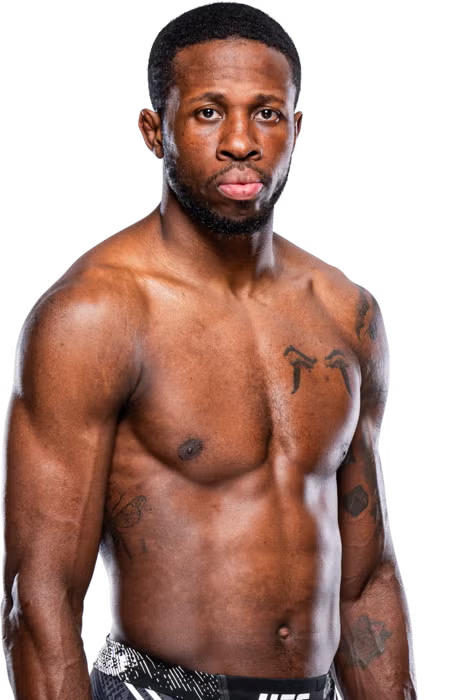
Of course, Brown is no lock to get a finish. He has racked up 13 of them, but he’s allowed a lot of his opponents to hang around, while between these two fighters, he’s proven to be much more vulnerable to early losses.
Tale of the Tape
| Fighter | Record | Height | Reach | Stance | Style |
|---|---|---|---|---|---|
Gabriel Bonfim | 18-1 | 6’1″ | 72.5″ | Orthodox | Mixed Martial Artist |
Randy Brown | 20-6 | 6’3″ | 78″ | Orthodox | Striker |
This is your classic striker vs. grappler bout. It might not be quite that simple since Bonfim can mix in solid striking and has been the more dominant fighter, but that’s the way I am viewing it.
Key Matchup Factors to Watch
This should be a very good fight so long as these guys aren’t afraid to make a move. Brown’s length advantage should allow him to take shots right away, though, and how Bonfim responds – and whether he can score a takedown – will decide how this fight plays out.
- Reach Advantage: The biggest strength for Brown in this fight is his massive height and reach edge. If he can use it to land easy strikes and keep Bonfim from scoring takedowns, he has a clear path to victory.
- Wrestling Edge: Closing the gap on that reach won’t be easy, but it’s not something Bonfim hasn’t done before. If these guys hit the ground, he has a clear edge.
- Inside the Distance: Due to both fighter’s having top shelf finishing ability and there being a clear contrast in styles, someone is getting finished. Bettors should be looking at KO and submission props with confidence.
Best Bets & Betting Strategy
This fight is fairly straight forward, but the key is to apply the matchup to actual odds and take home some value. Here are the top picks for this bout at UFC Vegas 111:
| Bet | Reasoning | Confidence |
|---|---|---|
Inside the Distance (-290) | The odds favor this thing ending before five rounds are up, and so does the contrast in styles. Both fighters know how to finish fights, so you don’t even need to pick a side to get an easy win. | 9/10 |
Bonfim by Submission (+180) | This fight won’t go the distance and if I’m right about that, I think Bonfim via submission is the most likely outcome. He has a staggering 13 submissions to his name and has the matchup advantage by quite a bit if he can get the fight to the ground. | 8/10 |
Under 2.5 Rounds (+102) | Bonfim’s gas tank isn’t praised as the best, so if he’s going to win like I think he can, he will have to do it early. The nice thing is Brown can obviously shock with the upset and we can still cash this plus money bet. | 8/10 |
Risk Factors & Things to Watch
Things can go wrong even with sure things. Here’s why our favorite bets could fail:
- You Reach, I Teach: The saying usually applies to basketball, but reach advantages are no joke in MMA. It’s entirely possible Brown capitalizes on that edge and either scores the KO or at least keeps Bonfim’s takedown attempts at bay.
- Upset Special: MMA is one of the highest variance sports there is, as upsets happen all the time. Even the biggest favorites can lose, and Bonfim isn’t even an alarming favorite.
- Decision Time: This fight also has a slim chance to go the distance. Bonfim has excellent defense and wrestling, but Brown has proven he can grind fights out. If the reach factor ends up being a big issue, this fight could simply be a snoozer that lasts five rounds.
The Bottom Line: Gabriel Bonfim’s Time to Shine
Ultimately, my Gabriel Bonfim vs. Randy Brown prediction has the man known as Marrentinha coming out on top. He’s the younger fighter in his physical prime, he’s in stellar form, and he has a ton to fight for.
In addition, Bonfim has been the far more dominant fighter and he has a more lethal skill-set. He can even stand and trade for a bit, leaving Brown’s reach advantage as the only real obstacle to a win.
Brown could always shock us with a knockout win or grind out a boring fight, but the more likely scenario has Bonfim taking him to the mat and choking him out.
Final Prediction Summary
| Bet | Pick | Odds | Confidence |
|---|---|---|---|
Inside the Distance | Yes | -290 | 8/10 |
Method of Victory | Submission | +180 | 8/10 |
Total Rounds | Under 2.5 | +102 | 8/10 |
Ready to place your wagers on this matchup? Check out our list of the top UFC betting apps to find the best odds and welcome bonuses.
BYU Cougars vs. Texas Tech Red Raiders Prediction & Betting Picks (November 8th, 2025)
The BYU Cougars will be in unfamiliar territory in week 11, as they travel to Texas as massive 10.5-point underdogs to face the Texas Tech Raiders.
You couldn’t ask for a bigger game this week, as BYU will look to prove themselves against a worthy foe. These are the top two teams in the ultra competitive Big 12 conference, while sole possession of first place is on the line this weekend.
The oddsmakers think Texas Tech (-410) is the easy call to get the job, while the 51.5 game total suggests a shootout could be in the cards.
Not sure how to bet? I’ve got your back, as I’ll inspect the latest odds, go over the key matchups, and hand a BYU vs. Tech Tech prediction, along with my top picks.
Game Basics & Context
- Matchup: BYU Cougars (8-0) vs. Texas Tech Red Raiders (8-1)
- Date & Time: Saturday, November 8th, with kickoff at 11:00 pm CT (12:00 pm ET)
- Venue: Jones AT&T Stadium in Lubbock, TX
- How to Watch: ABC
Betting Odds
Check out the most current BYU vs. Texas Tech odds, per DraftKings:
| Team | Spread | Moneyline | Total |
|---|---|---|---|
BYU | +10.5 (-110) | +320 | O 51.5 (-115) |
Texas Tech | -10.5 (-110) | -410 | U 51.5 (-105) |
Rivalry & Venue Context
This matchup isn’t a tense rivalry, as the Cougars have only been in the Big 12 since 2023. As expected, there have not been many meetings between these two sides, with just two total games being played ever.
The most recent and only relevant clash came two years ago, where BYU prevailed 27-14.
Even that isn’t something we should hang our hat on too much when dissecting this game, so for the most part, we can ignore any rivalry impact.
Of course, it’s worth noting that BYU won on the road in that game. Although, Texas Tech has been nasty (5-0) at home in 2025.
Why This Game Matters
This game is about as big as it gets. Short of it being the actual Big 12 title game, it’s for first place in the conference right now. Who knows if it will hold given the state of the Big 12 (five total teams have 7+ wins), but it’s still extremely important.
Texas Tech needs the win more, to be fair. They probably wouldn’t mind keeping their home record pristine (nor exacting revenge for that 2023 loss), but a loss may signal the end of their bid for the Big 12 crown.
Both teams have legit conference championship aspirations, while deep runs in the College Football Playoff can’t be ruled out. What happens here doesn’t necessarily derail either of their seasons, but it absolutely could have a significant impact as far as their ultimate ceilings.
Team Profiles
BYU Cougars

The Cougars are probably the best 10.5-point underdog we’ll see all year. Some will call them a fraudulent undefeated team, but all I see is a winner. BYU got the season started off right with a 69-0 demolition over Portland State, and they never let up.
The offense has been methodical and on point all season, never dipping below 24 points in any game. They’ve survived all kinds of tests, whether it be upsetting as the underdog or taking care of business as big favorites.
BYU is undefeated in a brutal Big 12 conference, too, as they’re coming off a terrific 41-27 win over Iowa State.
This team can hurt you in a number of ways, as running back LJ Martin (789 yards) paces the nation’s 35th best ground game. Through the air, quarterback Bear Bachmeier is more than just a guy with an awesome name; he’s executing at a high level (11 TDs) and keeping the Cougars balanced.
That’s led to the country’s 35th best scoring offense, and one that is particularly good at closing out drives (27th in RZ %) and protecting the football (7th fewest turnovers).
BYU is even better defensively. That balanced attack helps them out, to be sure, but the Cougars take care of business, allowing just 19 points per game (19th), and doing a passable job against both the rush and the pass.
Texas Tech Red Raiders

The odds suggest Texas Tech is even better, which is honestly saying a lot. Where BYU is more balanced and methodical, the Red Raiders are admittedly more explosive, as they put up over 40 points per game (3rd).
Texas Tech has easily one of the nastiest offenses in all of college football, as they can light you up down the field (17th in passing yards per game) with Behren Morton slicing defenses up to the tune of 1,728 yards, 15 TDs, and a blistering 68.7 completion rate.
The running game isn’t half bad, either, as the Red Raiders lean on Cameron Dickey (760 rushing yards, 10 scores) to generate the country’s 37th best ground game.
As gifted as Texas Tech is on offense, they are impossibly just as good on the other side of the ball. The Red Raiders can flip fields better than anyone (2nd in takeaways), while they are incredibly stingy (5th in scoring) and stifle the run better than anyone.
All of that sounds like bad news for BYU – and it probably is, to an extent – but let’s not forget that Texas Tech did stumble a few weeks ago. Neither their offense or defense were up to par in a 26-22 loss to Arizona State.
Key Matchup Angles
Consider the following key matchups:
- BYU’s rush offense vs. Texas Tech’s run defense: This is probably the most important stylistic matchup, as BYU likes to run (57% rush rate) and they’re going up against the best run defense in all of football.
- Texas Tech’s passing game vs. BYU’s pass defense: The Red Raiders are more balanced than BYU, and they have a more explosive passing attack. How it fares against the Cougars opportunistic secondary could tell us a lot about how this game goes.
- Turnover Battle: Speaking of opportunistic, one of the biggest keys in this game is the turnover battle. BYU does not cough up turnovers, but Texas Tech is one of the best defenses in football at forcing them. Something has to break.
Betting Insights & Trends
Both of these teams have been very good against the spread. BYU is 6-2 overall ATS on the year, 2-0 ATS as the underdog, and 3-2 against the spread in Big 12 games. They are also 3-1 against the spread as the road team.
The Red Raiders have been even better, coming in with a stellar 8-1 ATS mark so far in 2025. Texas Tech is 5-0 ATS at home, too, while they are 5-1 against the spread in conference games.
The total is admittedly tough to gauge when you have two teams that can be so good on offense, yet so stingy defensively. Playing into that, the Over is just 4-4 in BYU games this year, while it is just 4-5 for Texas Tech.
Best Bets & Confidence Levels
Check out the top picks for this game:
| Bet | Recommendation | Confidence |
|---|---|---|
BYU ATS +10.5 (-110) | I don’t care how much better anyone thinks Texas Tech is than BYU; this spread is egregious. BYU is 2-0 as an underdog on the year and this is just insanely disrespectful. I think they are even in play to win, but +10.5 is just silly. | 9/10 |
Over 51.5 (-110) | This is a tough one given both team’s defensive aptitude and what is on the line here. However, Texas Tech can do most of the damage all on their own. I think BYU gives it a go, so 52 total points probably isn’t asking the world. | 6/10 |
The only bet in this game I feel really strongly about is BYU beating the spread. Texas Tech is the better team by the numbers and they are very good at home, but they’re not unbeatable.
At least so far, BYU has been. I think they have their own flaws, but they’re quite balanced and don’t have enough glaring weaknesses to buy them falling this short.
The Over also looks good on paper given the scoring ability of both teams. Texas Tech averages over 40 points per game and they could seriously get us there all on their own.
Risk Factors & What Could Go Wrong
There are no guarantees in betting. Here’s why these bets could fail:
- Home Field Advantage: BYU is a 10.5-point dog for a reason and Texas Tech has been unstoppable at home. With the Red Raiders needing this win a little more, it is entirely possible they come out and smoke the Cougars.
- Elite Defenses: I like the Over, but the defenses are just as good as the offenses. Texas Tech holds opponents to 14 points per game and BYU isn’t that far off. I think a shootout is in the cards, but we could always see a defensive battle given the stakes.
Putting Our Pick on the Board: Here’s How It Plays Out
Final Score Prediction: Texas Tech Red Raiders 34, BYU Cougars 27
Texas Tech is perfect at home and they pass the eye test when you watch the tape and measure these teams against each other by the numbers. Their ability to flip the field in the turnover game is huge and they have the explosive offense and stingy defense to allow them to dominate even someone as good as BYU.
That has me liking Texas Tech to get the win, but we are not targeting them at -410 and I think the 10.5-point spread is a bit rich. BYU is better than that, as they’ll obviously want to stay perfect. They also still have a good defense and a more than capable offense.
A shootout is entirely possible given what is on the line, while the total is actually fairly modest when you look at what the Red Raiders can do offensively. Ultimately, I like Texas Tech to win, BYU to beat the spread, and this game to hit the Over.
Tulane Green Wave vs. Memphis Tigers Prediction & Betting Picks (November 7th, 2025)
These teams have battled each other for a while now, butting heads for 41 total games. Memphis has a sizable lead (25-15-1), but Tulane won the two most recent meetings – both by 10 points.
Memphis won the game before that, but the Green Wave have had their number of late, taking four of the last six meetings.
Friday night’s game will be in Tennessee, where Memphis lost to Tulane last year. They are 6-1 over the last seven contests against Tulane on their home field, however.
Game Basics & Context
- Matchup: Tulane Green Wave (6-2) vs. Memphis Tigers (8-1)
- Date & Time: Friday, November 7, with kickoff at 9:00 pm ET
- Venue: Simmons Bank Liberty Stadium, Memphis, TN
- How to Watch: The game will be broadcast on ESPN.
Why This Game Matters
This game is huge for the AAC standings. It’s a rivalry game at heart, but there is more on the line than pride for this one, as both teams are off to strong starts and have bowl game aspirations.
Nevermind a bowl game, both Tulane and Memphis can still win the AAC. Navy is presently sitting atop the conference, but a Memphis win would vault them into a tie for first place.
This is do-or-die time for the Green Wave, though. Tulane has had a nice year, but a loss this week would end their chances at claiming the conference crown. A win would keep them one game behind Navy, however, and would give them the tiebreaker over Memphis with just three more games remaining on the regular season schedule.
Betting Odds
Check out the most current Tulane vs. Memphis odds, per ESPN Bet:
| Team | Spread | Moneyline | Total |
|---|---|---|---|
Tulane | +3.5 (-110) | +145 | Over 53.5 (-115) |
Memphis | -3.5 (-110) | -175 | Under 53.5 (-105) |
Team Profiles
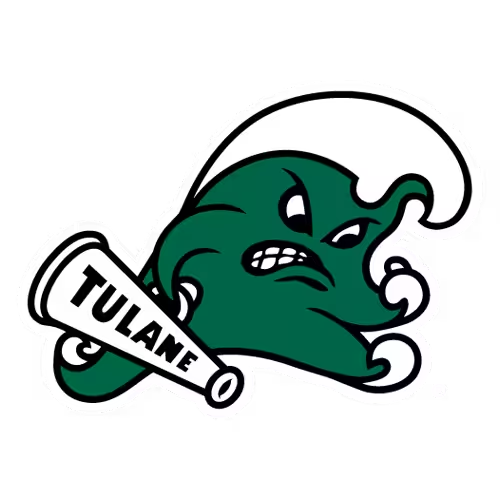
Tulane Green Wave
The Green Wave have enjoyed a stellar 2025 campaign, as they’ve done a great job against inferior competition. They struggled mightily against a good Ole Miss team, while UTSA hung 48 points on them in a loss last week.
Their two losses put dents in their defense (allowing 25.5 points per game), but they typically have a balanced offense that gives them a shot against anyone they face. Tulane comes into this game ranked 41st in rushing and 62nd in passing – not truly elite, but plenty solid and capable of moving the ball at will.
Tulane takes incredibly good care of star quarterback Jay Retzlaff, who is the driving force behind their dynamic offensive attack. He’s enjoyed a productive season, piling up over 500 yards and nine scores on the ground, as well as over 1,600 passing yards and seven touchdowns through the air.
Offensively, Tulane has enough to give Memphis a sweat. It’s their suspect defense that could derail their bid to shock the world.

Memphis Tigers
There’s no denying that Memphis is the better team on paper. They have the better record, but it goes deeper than that. For one, their lone loss was a forgivable 31-24 shootout against UAB, while their offense has been a well-oiled machine in literally every game.
Seriously, they haven’t dipped below 24 points in a single game in 2025 and enter this tense AAC clash ranked 11th in scoring (36.8 points per game). Dual threat quarterback Brendon Lewis (557 rushing yards, 8 TDs) is a huge part of their dominance, while they spread it out between running backs Greg Desosiers Jr. and Sutton Smith (over 900 rushing yards and 13 TDs between them.
That’s equated to the nation’s 20th best ground game, while Lewis certainly hasn’t disappointed as a passer, completing a staggering 69% of his passes with almost 1,900 yards and 10 scores through the air.
Memphis can simply do it all on offense. They run a ton – and do it as well as anyone – but that opens everything up down the field (37th in yards per pass).
As terrific as the offense has been, Memphis hasn’t let much slip on defense. They come in ranked 23rd in defensive scoring, while their front seven (35th) tends to stifle the run.
Key Matchup Angles
Consider the following key matchups:
- Tulane’s rush offense vs. Memphis’ run defense: Both of these teams want to pound the rock, but only one of them has a defense truly capable of stopping it. Tulane would have to flip the script to control this game on the ground.
- Tiger’s pass rush vs. Tulane’s o-line: The Green Wave will run most of the time if they have their say, but when they do drop back to pass, they need to protect the quarterback. They typically do (8th best sack rate), but if Memphis can find a way to get consistent pressure, it could alter this game.
- Memphis’ rush offense vs. Tulane’s run defense: This is a total mismatch, but it needs to be said. The Tigers run the ball at a 55% clip, using a stable of effective running backs, as well as a dynamic QB. There isn’t much to suggest they’re going to lose this part of the matchup.
Betting Insights & Trends
The spread actually opened with Tulane as 4.5-point road dogs. It moved to +3.5, but that isn’t enough of a jump to get me off of Memphis at home. The Tigers have lost two in a row in this series, but they are the better team and have largely taken care of business against the Green Wave at home.
Tulane hasn’t been a super reliable team to bet on. They’ve won a lot of their games, but they’re just 3-4-1 against the spread on the year. They’re also 0-1 ATS so far as the underdog.
On the other side, Memphis has been a team we can trust, as they are 8-1 against the spread and 6-1 ATS when favored in 2025.
Best Bets & Confidence Levels
Check out the top picks for this game:
| Bet | Recommendation | Confidence Level |
|---|---|---|
Memphis -175 | Tulane won the last two meetings, but Memphis is the better team this year. Their offense is much more dynamic, and nobody has been able to stop them. I don’t see the Green Wave being the first to really do it on the road at night. | 8/10 |
Over 53.5 (-115) | Memphis has a pretty good defense, but both teams can put up some points, and I think the Tigers will do a lot of the heavy-lifting to get us there. They average almost 40 points per game, and Tulane isn’t about to shut them down. It all comes down to whether the Green Wave can push it over the hump – and I think they will. | 7/10 |
- Primary Pick: Memphis ML (-175)
- Secondary Pick: Over 53.5 (-115)
This game has a lot of offensive potential. Both teams can run the ball very well, while Memphis specifically can torch defenses from anywhere on the field. Given the amount of points the Tigers put up regularly, they look like a really good bet to win at home, and they should get us to the finish line in regards to the total. Tulane just needs to show up and not burn us.
Tulane vs. Memphis odds are shifting fast — track every line move and grab the best numbers before kickoff. Compare live spreads now at the top football betting sites.
Risk Factors & What Could Go Wrong
There are no guarantees in betting. Here’s why these bets could fail:
- Winning Streak: It shouldn’t be ignored that Tulane has had the Tigers’ number lately, winning two in a row in the series. Sometimes there’s something to be said about simply knowing how to beat a specific and familiar foe.
- A Lot to Play For: Let’s also remember that both of these teams are solid teams with a ton to play for. It’s quite arguable that Tulane really can’t survive a loss in this spot, while Memphis could. Tulane could easily come out as the hungrier team.
- Rivalry Game: The other obvious factor is that these two teams know each other, and this is an AAC battle. No bet is a lock when it comes to conference rivals that know each other.
- Run Battle: One more thing, both teams love to run and are good at it. If Tulane can establish an early lead and lean on their ground game, it’s not crazy to think they keep a dynamic Memphis off the field and grind out a tight road win.
Putting Our Pick on the Board: Here’s How It Plays Out
Final Score Prediction: Memphis 37, Tulane 27
Tulane has taken the last two meetings by 10 points each, so Memphis dishes out some sweet revenge and returns the favor. They are the home team at night, and they have first place dead in their sights.
Both teams have a ton to lose with a loss, but the Tigers are simply the better overall offensive team, and they actually have a competent defense. This feels like a mismatch, and if Memphis came in as a touchdown favorite, I’m not sure anyone would actually bat an eye at it.
That said, I think Tulane will still show up and help the Over hit. Look for a lot of offense, but Memphis to fully control a fairly high-scoring affair.
Chicago Bulls vs. Milwaukee Bucks Prediction & Betting Picks (November 7th, 2025)
The Chicago Bulls will look to stay in first place in the NBA’s Central Division on Friday night, when they risk their stellar 6-1 record at Fiserv Forum against the Milwaukee Bucks.
Chicago is off to a blazing start thanks to what looks like a career year out of star point guard Josh Giddey, but they’ll enter Mil-town as +146 underdogs with a +4 spread attached to them.
Milwaukee is no slouch at 5-3, and they have big man Giannis Antetokounmpo playing as well as ever, as the former MVP comes into this one averaging 32 points per game.
Will the Bucks get the win and inch closer to first place, or will Chicago show once again they’re the team to beat in the Central Division? I’ll point you to the right answer as I inspect the latest odds, highlight my preferred bets, and hand out a Bulls vs. Bucks prediction.
Game Details
- Matchup: Chicago Bulls (6-1) vs. Milwaukee Bucks (5-3)
- Date & Time: Friday, November 7, at 7:00 p.m. ET
- Venue: Fiserv Forum in Milwaukee, WI
- How to Watch: Chicago Sports Network, FanDuel Sports Network Wisconsin and NBA League Pass
Early Season Performance & Trends
Chicago Bulls
Chicago has been one of the most exciting teams in the NBA to start the 2025-26 season. Not only do they have an impressive (and shocking) 6-1 record, but they’ve been dazzling on offense, scoring at least 110 points in every game while pushing the pace (12th) and executing efficiently (10th).
Josh Giddey is what makes this offense go, as he’s presently almost averaging a triple-double with an insane 23-10-9 stat line.

Chicago plays fast, is efficient, and checks all of the important boxes. The Bulls come into this game ranking 7th in scoring, but more importantly, they are putting pressure on defenses in transition (10th in fastbreak points per game), and they are playing team basketball (5th in assists).
Giddey isn’t completely on his own, as center Nikola Vucevic (19 points and 12 rebounds per game) is as good as ever, while four more Bulls players are averaging double figures in scoring.
As great as this team’s offense is, it’s their defense that is shockingly effective. Despite their fast pace and high scoring numbers, they rank 12th in defensive scoring, are 14th in efficiency, and they are defending the long ball (7th) as well as anyone.
The sample size is small, but the Bulls seemingly run a hyper-efficient offense with a high ceiling, but don’t get so lost that they forget to play sound defense. That’s the mark of a legit playoff contender. The only question is if they’re actually for real, and if they can keep it up against a solid Bucks team on the road on Friday night.
Milwaukee Bucks
The Bucks will probably only go as far as The Greek Freak will take them. Giannis Antetokounmpo faced plenty of questions involving trade rumors during the offseason, but he’s silenced the skeptics with sensational play, and has Milwaukee on the brink of being one of the best teams in the Eastern Conference.
Milwaukee has battled several injuries, of course, and despite a solid start, could begin slipping back into the murky waters of mediocrity with a loss on Friday. A big reason why that fear could be realized is a lack of reliable support beyond Giannis, but it’s also not impossible that he could will the Bucks to victory.

Ryan Rollins could be the guy to help Giannis, though, as he’s off to a blazing start, putting up 16 points and 5.6 assists per game. If center Myles Turner can show up more in the scoring department, a Bucks team that ranks 10th in scoring may have a trio good enough to hang with the best teams in the East.
Giannis allows the Bucks to dominate on the inside, but he’s still mostly a one-man show. If he doesn’t bring his A-game (and sometimes even if he does), Milwaukee can suffer.
Head‑to‑Head / Historical Context
The Bulls and Bucks know each other quite well, as they play against each other in the Central Division four times a year. They’ve met 271 times during regular-season play, with the Bulls holding a narrow 137-134 edge.
The two sides split their season series 2-2 last year, with the Bulls winning the most recent meeting in December of 2024. The Bucks dominated the series (3-1) the previous year.
In the last eight meetings, the two sides have both reached 100+ points six times, and they’ve battled their way to two different overtime thrillers.
Key Matchup Breakdown
Josh Giddey pushes the pace offensively and sets up most of the offense. He has done a fantastic job scoring on his own, as he can take the rock inside or hit open threes. His playmaking and ability to run the offense at a high level is his strong point, though, as he knows how to find the weak spot in a defense and can set his teammates up beautifully.
Chicago is a serious problem on offense, as they can hurt you with multiple players and they can execute both in the halfcourt game and in transition. They are very effective at working inside and getting easy buckets, while their outside game has been on point (3rd in three-point shooting percentage) as well.
So far, they don’t have a glaring weakness on offense outside of consistently getting to the charity stripe (24th in free throws attempted per game). If their efficiency wanes, a lack of freebies could impact them in a close game.
Milwaukee’s process is pretty simple; give the ball to Giannis and get out of the way. Not having Kevin Porter Jr. on the floor takes away another skilled playmaker and scorer, but Ryan Rollins has stepped up as a decent #2 behind Giannis.
Still, this is The Greek Freak’s team, and he continues to dominate. Giannis remains a monster inside, and that’s helped the Bucks rank 15th in scoring inside the paint, while the Bucks also own the league’s best effective field goal percentage.
The attention Giannis attracts when he penetrates creates open looks on the outside, and so far, the Bucks are translating that into the 6th-best three-point shooting squad. Milwaukee does not hesitate to let it fly from long range, either, and they rank 5th in made threes per contest.
The big issues, naturally, are if Giannis isn’t feeling it, or if the outside shots aren’t falling. To this point, Milwaukee hasn’t proven they’re good enough to overcome either of those things happening.
Despite a fast pace, the Bulls are currently defending well overall. They are still giving up over 115 points per game, but they have stifled opposing defenses on the perimeter.
Unfortunately, Chicago has been bad in transition (24th) and weak on the interior (24th). Those could be less than ideal weak points on the road against a team with one of the best interior scorers in the NBA.
For Milwaukee, they have the offensive aptitude to hang with the Bulls and run all night. They aren’t inside the top-10 in a lot of key categories, but they aren’t far off, either. If they can dominate inside and hit their outside shots, they could crack Chicago’s defense.
The Bucks aren’t a scary team on defense, though. They allow over 119 points per game and are letting teams get to the free-throw line too often. They do a good job inside, defend the long ball well, and limit easy buckets in transition, however.
- Run All Night: The Bulls will look to push the pace, but it might actually lead to their demise. Giannis is a fastbreak nightmare, while the Bucks have been good in transition on defense. Milwaukee actually plays faster than the Bulls (9th in pace), potentially leading Chicago into a trap.
- Giannis vs. Chicago’s Interior D: The Greek Freak is tough for anyone to handle, but a defense that struggles on the break and can’t defend the paint? This could be a brutal spot for the Chicago defense.
- 3-Point Barrage: Both teams want to run and will let it fly from long range, while both defend the perimeter pretty well. The Bucks are a better shooting team, while Chicago ranks 3rd against the three. Something may have to break here.
Health favors the Bulls in this matchup. Milwaukee lost Damian Lillard to a torn Achilles last year. They somehow parlayed that debacle into Myles Turner, but he’s yet to pan out, and their replacement – Kevin Porter Jr. – is sidelined.
Too much of the offensive load is on Giannis and a band of no-namers. It’s possible they still thrive in a decent spot at home, but not guaranteed.
Both of these teams are well rested. Neither side has played since November 4th, giving them three days to get their bodies right. This is Chicago’s third road game of the year and the start of six road games in seven games. It’s worth noting their only loss was away from home.
Betting Odds & Market Interpretation
Check out the latest Bulls vs. Bucks betting odds (via FanDuel):
| Team | Spread | Moneyline | Total |
|---|---|---|---|
Bulls | +4 (-108) | +144 | Over 240.5 (-110) |
Bucks | -4 (-112) | -172 | Under 240.5 (-110) |
What the Market Suggests
The Bucks get the nod at home, where they are 3-1 so far this year. The line doesn’t necessarily tell us how the sportsbooks feel about either team, but the spread is reasonably tight, which is fair since the Bulls have looked quite good during a 6-1 start.
The game total is also appropriately priced, as both teams are top-10 in scoring. Chicago’s defense is efficient, but they still have their limitations. Overall, it’s a healthy total that suggests plenty of points will be scored thanks to a fast-paced setting.
From a Bettor’s Lens
The point spread looks good if you are interested in betting on the Bulls. Chicago has obviously been winning a lot to start the year, but they weren’t expected to. They have defied all odds, going 6-1 against the spread and 4-1 ATS as the underdog.
Milwaukee has lost three of eight games, and two of them were games they were supposed to win. They’re still 5-3 against the spread overall, but just 1-2 ATS when favored.
The matchup points to a close game with shootout potential, but the contrast in styles favors the Bucks if they execute in the areas where they typically excel.
Situational Considerations
Kevin Porter Jr. remains out for the Bucks, so they are shorthanded at guard. Chicago has been missing guard Ayo Dosunmu lately, and he’s questionable to suit up.
Chicago has also been without star shooting guard Coby White all year, and he is not expected back yet. The Bulls have been putting up better numbers so far and have more overall star power, but Milwaukee is the healthier team.
Best Bets & Confidence Levels
| Bet | Recommendation | Confidence Level |
|---|---|---|
Over 240.5 (-110) | Both of these teams are inside the top 12 in pace and top 10 in scoring. The defenses aren’t good enough to make me believe in the Under. I’m hammering the Over with confidence. | 8/10 |
Milwaukee Bucks -172 | The Bucks need to win this game to stay with the Bulls at the top of the division. They’re at home, and Giannis should feast in this matchup thanks to Chicago’s weak transition and interior defense. | 7/10 |
Chicago Bulls ATS +4 (-108) | This game is going to be a fire fight. There is a lot at stake early in the season, and the Bulls have been very good ATS to start the year. | 7/10 |
Chicago Bulls vs. Milwaukee Bucks odds are moving fast — stay ahead of every line shift and compare spreads now at our best sports betting sites before tip-off.
Final Score Prediction & Closing Thoughts
Final Score Prediction: Bucks 122, Bulls 120
This game is going to yield a ton of points. If you are looking for the best Bulls vs. Bucks prediction, it’s that you’re going to get a fast-paced game with a ton of scoring; so much so that even with a big 240.5 total, the Over is going to deliver.
A big reason why we’ll get there is both teams can get easy buckets and fill it up from long range. But the biggest mismatch is with Giannis inside, as the Bulls don’t defend the fastbreak very well, and they also have nobody down low that can contain The Greek Freak.
While we’re getting loads of points and the Bucks own the matchup edge, Chicago has still been very good. Look for the Bulls to keep it interesting until the very end in what should be a barn burner.
Las Vegas Raiders vs. Denver Broncos Prediction & Betting Picks (November 6th, 2025)
The Denver Broncos will be huge 9.5-point favorites when they host the AFC West rival Las Vegas Raiders on Thursday Night Football in week 10. The two teams have opposite records and are trending in very different directions, but the Raiders will hope to play spoiler.
Denver (7-2) is sitting in first place in the division and has won six games in a row. They are understandable -500 favorites to take care of business at home, but that moneyline and their point spread put bettors in no man’s land.
The Broncos also have a stingy defense, as the low game total (43.5) suggests we could be in for a bit of a snoozer on a short week. All advantages rest with the Broncos at home in this one, but division rivalry meetings tend to be toss-ups.
Wondering if the Raiders are an upset pick worth attacking or if Denver can cover a gaudy spread? I’ll point you in the right direction as I inspect the latest odds, investigate the key matchups, and offer my Raiders vs. Broncos predictions and best bets.
Game Info Snapshot
- Date & Location: Thursday, November 6th, 2025 | Kickoff at 7:15 pm ET (Amazon Prime) at Empower Field at Mile High in Denver, CO
- Team records entering the game:
- Raiders: 2-7
- Broncos: 7-2
- Odds (from DraftKings)
- Spread: Raiders +9.5 (-110) | Broncos -9.5 (-110)
- Moneyline: Raiders (+380) | Broncos (-500)
- Total: Over 42.5 (-118) | Under 42.5 (-102)
This is a division rivalry game, but the oddsmakers don’t care about that. Denver is priced up slightly because they’re at home on a short week, but the point spread and moneyline are a big indicator of how far apart these teams are. Las Vegas has an offense that runs hot and cold, and Denver’s defense is elite, which together play into a very low total.
Storylines to Watch
The biggest storyline for this game is that the Broncos are in full control of the AFC West. They have been borderline lucky – if not just good – at finishing games strong and coming from behind, but they could use this game to show how dominant they can be against inferior competition.
- Healthy Bowers: The Raiders haven’t been good in 2025, but they also haven’t been themselves. Star tight end Brock Bowers specifically hasn’t been healthy. The second he got rested and looked normal? He popped off for 3 TDs last week.
- Fast Start: Denver has rotated dominance and slow starts with exciting finishes for much of the year. This game is a good test to allow them to prove they can start fast and dominate throughout an entire game, rather than wait for the fourth quarter to show a pulse.
- Nothing to Lose: A big narrative here is that the 2-7 Raiders have nothing to play for, but they also have nothing to lose. Las Vegas played with plenty of heart last week, and opted to go for it all with a two-point conversion at the end. They failed, but that spirit could carry over to TNF.
- Not So Surtain: Denver’s defense is still good on paper, but they will be without superstar cornerback Patrick Surtain II. Could his absence be felt on a short week against a Raiders team that has nothing to lose?
Team Profiles
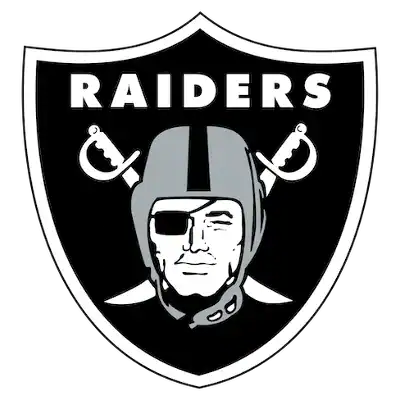
Las Vegas Raiders
The Raiders made big moves during the offseason; hiring veteran head coach Pete Carroll, trading for quarterback Geno Smith, and drafting star running back Ashton Jeanty. After a 1-0 start, everyone thought they could be a contender.
Fast forward to week 10, and they are 2-7 with the season circling down the drain. That said, they do have some positives to lean on going into TNF.
- Brock Szn: Brock Bowers got hurt early in the season and was never the same. After getting time to rest, he looked like his old explosive self last week, shredding the Jaguars to the tune of three scores.
- Pass Happy: While often born out of necessity, the Raiders have been a pass-first offense in 2025, throwing at a 58% clip. It hasn’t led to much top shelf production, but as we saw last week, they do have a ceiling. Their tempo could create problems for a shorthanded Broncos secondary.
- Mad Maxx: Raiders pass rusher Maxx Crosby wasn’t traded, so he’ll be out there trying to take Bo Nix’s head off. Always fired up and motivated, Crosby gives Las Vegas a nasty edge on the defensive line and he would love nothing more than to derail Denver’s season.
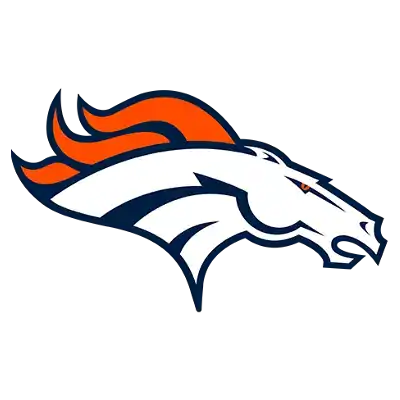
Denver Broncos
The Broncos have enjoyed a highly productive 2025 campaign, as they are 7-2 and atop the AFC West. It hasn’t all been perfect, but their only two losses came against good Colts and Chargers teams by a combined four points.
Denver has their issues like anyone else, but they could be undefeated right now. Their numerous fourth-quarter comebacks are a sign of a team that is often complacent, but also one that never gives up.
Here are a few more key points for the Broncos coming into Thursday Night Football:
- Ground & Pound: On a short week, it might make sense for the Broncos to take it easy on the top running back, DK Dobbins. Denver’s 7th-best rush offense has a chance to dominate, but turning to rookie rusher RJ Harvey could keep the often-injured Dobbins fresh (and healthy).
- Protect Nix: Maxx Crosby makes it his life’s mission to sack AFC West quarterbacks, but Denver’s pass protection has been elite (#1 in sacks allowed). So long as it stays that way and Maxx is kept at bay, the Broncos should be able to fire on all cylinders.
- Elite D: Denver wasn’t really tested defensively against Houston last week, but not having Patrick Surtain II against a weapon like Brock Bowers could be huge. However, that unit has been elite for much of the year, ranking 4th in scoring, #1 in sack rate, 8th vs. the run, and 6th against the pass.
Key Matchups & Angles
Take a look at the key Raiders vs. Broncos matchups for TNF:
- Broncos running game vs. Raiders run defense: Overall, the Broncos have been quite effective on the ground, while the Raiders rank 16th against the run. However, they do grade out very well (7th) in yards per carry allowed. If the Raiders can stay fresh and play with a lead, they might be able to flip the script.
- Bowers vs. Denver’s pass defense: The Broncos have an elite pass defense, but that’s when Patrick Surtain II is healthy. Las Vegas has some big play threats at wide receiver, while tight end Brock Bowers reminded everyone last week he’s a walking mismatch. Denver (14th most yards allowed to TEs) might not have anyone that can actually stop him.
- Denver’s RZ offense vs. Raiders RZ defense: The Broncos tend to seal the deal when they get inside the 20 (67.86%), while the Raiders rank 17th at preventing touchdowns in the red-zone. If Denver’s offense overpowers the Raiders like the numbers suggest, they could score at will when they get near the goal-line.
Betting Trends & Odds Context
Check out the latest odds, per DraftKings:
| Team | Spread | Moneyline | Total |
|---|---|---|---|
Raiders | +9.5 (-110) | +380 | Over 42.5 (-118) |
Broncos | -9.5 (-110) | -500 | Under 42.5 (-102) |
Take a look at some key betting trends for this TNF tilt:
- Public Betting: The public betting per Action Network has this game borderline split. Just 60% of the bets are on Denver, while 53% of the money is surprisingly on the Raiders.
- Matchup History: This storied rivalry has produced 131 meetings with the Raiders leading the all-time series, 73-56-2. It’s been all Denver in the last two meetings, but the Raiders won the previous eight games prior.
- ATS Data: The Broncos have a great record, but they’re just 4-4-1 against the spread and 2-4 ATS as the betting favorite. Las Vegas is 3-5 against the spread and 2-4 ATS as the underdog, however.
Best Bets for Raiders vs. Broncos
Pick 1: Broncos ATS -9.5 ( -110) – 8/10 Confidence
Why We Like It
Denver is at home on a short week in a primetime setting. They have the edge across the board when you look at this matchup, while the Raiders have gotten blown out several times this year. They also have much more to play for and need to show they can dominate inferior competition.
Risks/What to Watch
The return of a healthy Brock Bowers combined with the absence of Patrick Surtain II provides cause for pause, while division rivalry games can often go against logic.
Pick 2: Prop Play – Brock Bowers Over 60+ Rec Yds (-168) – 7/10 Confidence
Why We Like It
Bowers looked like himself last week, dominating whatever defensive look the Bears threw at him. He’s only topped 60+ receiving yards twice this year, but they were the only two games he was healthy in. His target volume is safe after the team traded away Jakobi Meyers, too.
Risks/What to Watch
Denver’s defense is still pretty stingy. We don’t know if they’re in for a drop off without their top cover man, but there’s a decent chance they still sell out to stop Bowers.
Pick 3: Prop Play – J.K. Dobbins Anytime TD (-130) – 7/10 Confidence
Why We Like It
The Raiders are not great against the run and have allowed the third most rushing scores to running backs in 2025. Dobbins is seeing a healthy amount of carries on a weekly basis and has already scored a touchdown in four different games.
Risks/What to Watch
It’s always possible Dobbins is limited more than usual thanks to the short week, while rookie RJ Harvey could continue his own TD streak as well.
Las Vegas Raiders vs. Denver Broncos odds are shifting — monitor line changes and grab the best numbers before kickoff at our top football betting sites.
Final Verdict: Broncos Stay Hot to Get to 8-2
Final Score Prediction: Broncos 27, Raiders 10
The Broncos are the better team, and I think they’re going to play like it. Las Vegas could strike early and make bettors sweat, but they don’t have an advantage anywhere in this game.
Las Vegas has one wild card play; get Brock Bowers the ball and hope he dominates. It’s possible that works, but since he’s their only weapon, a good Broncos defense should do well to contain him.
Bowers will have enough volume to get 60+ yards, but Denver should contain the Las Vegas passing game overall, while the Raiders haven’t been a threat on the ground. Denver has, so Dobbins and Harvey should be able to find plenty of success en route to eating the clock late in a blowout win.
Montreal Canadiens vs. New Jersey Devils Prediction (November 6th, 2025)
The two best teams in the NHL’s Eastern Conference square off for bragging rights (and the #1 overall seed), when the Montreal Canadiens and the New Jersey Devils get together on Thursday night.
Montreal (9–3-1) dropped their last game, but still holds onto first place. They’ll hit the road to battle the Devils, who are just one game back and are a perfect 5-0 at home. That unblemished home mark has New Jersey pulling in as -160 favorites at FanDuel, while they also boast a 1.5 puck line (+152).
Both offenses are more than capable, playing into a hefty 6.5 total, suggesting a possible shootout. Across the board, this game offers compelling pricing; bettors just need to get on the right side of it.
Need help deciding how to bet on this tilt? I’ll go over the latest odds and matchups before handing you my preferred bets and Canadiens vs. Devils prediction.
Game Info
- Matchup: Montreal Canadiens (9-4-1) @ New Jersey Devils (9-3)
- Date & Time: Thursday, November 6 at 7:00 pm ET
- Venue: Prudential Center in Newark, NJ
- How to Watch: ESPN+ and MSGSN
Betting Odds
Take a look at the latest Canadiens vs. Devils odds for Thursday night, courtesy of FanDuel:
| Team | Puck Line | Moneyline | Total |
|---|---|---|---|
Canadiens | +1.5 (-188) | +132 | Over 6.5 (+110) |
Devils | -1.5 (+152) | -160 | Under 6.5 (-134) |
Recent Form & Context
To get a better idea as to what to expect out of this matchup, let’s quickly break down how these teams have fared to this point.
Montreal Canadiens
- Montreal has one of the best offenses in all of hockey, ranking 2nd in goals per game.
- The Canadiens have done a solid job on the road this year, going 5-2 so far.
- Nobody has a better shooting percentage than Montreal (14.5%).

Injuries
- Wing Patrik Laine is the only key injury for Montreal. The 27-year-old scored 20 goals for the Canadiens last year, but has been limited to just five games so far.
New Jersey Devils
- The Devils have the 2nd most goals scored in the Metropolitan Division (46).
- New Jersey has been perfect at home (5-0) so far in 2025.
- The Devils own the NHL’s 4th-best power play % (31.3%) this year.

Injuries
- Brett Pesce is expected to miss about a month with an upper-body injury, while Cody Glass and Zack MacEwen are presently on injured reserve.
- Right Wing Connor Brown is listed as day-to-day and is not expected to suit up against Montreal on Thursday.
Matchup Breakdown
As one would expect with two teams playing in the same conference, we’ve had quite a few New Jersey Devils vs. Montreal Canadiens battles – 177 to be exact. The series has gone to an 85-82-10 record, favoring New Jersey by a hair.
It’s been all Devils lately, as they’ve consistently put more pucks through in the back of the net with a 5-1 mark over the last six meetings. That includes wins in each of the last four games, too.
The recent meetings have all been close, though. New Jersey has scored five goals three different times (all wins), but each of the last five contests have been decided by just one goal.
Playing Styles & Trends
- Montreal: The Canadiens have the ability to push the pace when needed and offer a balanced scoring attack. Cole Caufield (10 goals) is the team’s top scorer, but five other players have at least four goals, and the team also ranks 6th in power play % and 2nd in assists.
- New Jersey: The Devils are tough to beat at home thanks to aggressive puck pursuit and possession focus. New Jersey plays great team offense (10th in assists) and is efficient (7th-best shooting percentage). Jack Hughes (10 goals) and Dawson Mercer headline a balanced attack.
- Special Teams: Both of these teams can take advantage of power play, as they both rank inside the top-10 in power play goals and power play percentage.
- Defense: Due to their style and offensive success, the defense can suffer both for New Jersey and Montreal. They presently are tied for 18th for goals allowed per game.
Betting Market Notes
- Puck Line (1.5): The puck line is appealing on the Over at plus money, but it may be a trap. Each of the last four games between these two teams have come down to one goal.
- Moneyline (+132/-160): This series is extremely tight, and every game in recent memory has gone down to the wire. Bettors get really good value on either side of this one, but predicting the winner may come down to a coin flip. After all, New Jersey opened as -172 favorites and now they’re down to as low as -150 at some sportsbooks.
- Total (6.5): We get two high-powered offenses with the #1 spot in the Eastern Conference up for grabs. Considering the offensive aptitude and lack of elite defense to this point, bettors have serious incentive to hammer a plus money Over (+110).
Props & Alternative Markets
- Anytime Goal Scorer: Jack Hughes and Cole Caufield have more goals (10) than anyone else in this game. They come in at plus money (+120 and +170) despite being the two best bets to put one through the net on Thursday.
- Team to Score First: New Jersey is very good at home and has been the aggressor in this series. They’re favored to win, too. It stands to reason that they’d strike first.
Best Bets for Montreal vs. New Jersey
Check out my preferred Canadiens vs. Devils bets for tonight:
| Bet | Why Do We Like It? | Confidence |
|---|---|---|
New Jersey Devils -160 | New Jersey has yet to lose at home; they have been dominating this series, and they’re just as good as Montreal offensively – if not better. | 7/10 |
Over 6.5 Goals (+110) | These two teams seem to always combine for a good amount of scoring. They both give up three goals per game on average, too. With a reasonably tight ML, I expect some fireworks, and we get the Over at plus money. | 7/10 |
Prop Play – Cole Caufield Anytime Goal (+170) | Cole Caufield has 10 goals on the year (tied for 1st), so he’s as good of a bet as anyone to score on Thursday. He’s also scored two goals in his last six games against the Devils. | 6/10 |
Montreal Canadiens vs. New Jersey Devils lines are moving fast — track the latest odds and compare spreads now at our top sports betting sites before the puck drops.
Risk Factors & What Could Go Wrong
It’s hockey, so literally the opposite can happen at any given moment. Predicting goals is risky, so it’s entirely possible Caufield simply doesn’t get the opportunities I think he’s set up for. Or maybe he ends up assisting on goals or passing up tougher shots instead.
The game total is a little high, so betting on the Over could be seen as overly ambitious. I don’t really think that’s the case, but sometimes when you expect a shootout, that’s when defenses tighten up the most.
New Jersey has yet to lose at home, and they’ve dominated in this series, but every great run ends eventually. That first home loss is right around the corner, and while the Devils have won a lot against Montreal recently, they haven’t won by more than one goal in any of the last four games.
Canadiens vs. Devils Prediction: New Jersey Stays Hot at Home
Final Score Prediction: Devils 4, Canadiens 3
I have New Jersey protecting their home base and putting up some goals, but not at an alarming rate. As noted, neither of these defenses has lit the world afire, while both offenses are among the better units in all of hockey.
Both teams scoring and allowing 3+ goals is something that is absolutely in play, and if they simply hit their averages we’re looking at the Over hitting with ease. If Cole Caufield can be part of the fun at +170, we can get the clean sweep.
Chatbots, Deepfakes & Betting: How AI Threatens Integrity in Sports Wagering
Imagine this: you’re scrolling social media before kickoff when a “verified” account posts a breaking video of a star quarterback announcing a sudden injury. The clip looks real — voice, lighting, background — but it’s not. Within minutes, the betting lines swing, parlays shift, and thousands of wagers flood in. Hours later, the team confirms the video was fake.
Welcome to the new world of sports wagering — one where AI-generated deception can move markets faster than any insider tip ever could. Chatbots, deepfakes, and algorithmic betting tools are no longer future tech; they’re active players in today’s game.
AI has transformed sports betting from data-driven excitement into a potential minefield of manipulation. The same tools that power predictive odds and customer service are now being weaponized to mislead, exploit, and blur the line between real and fabricated.
In this article, we’ll uncover how AI threatens the integrity of sports wagering — and what bettors, affiliates, and operators must do before trust in the game collapses.
The AI Wave in the Betting World
Artificial intelligence isn’t coming — it’s already here, woven into nearly every corner of modern sports wagering. From the algorithms that set live odds to the predictive models driving prop bets, AI is working behind the scenes every time you open a sportsbook app.
Bookmakers now use machine learning to analyze millions of data points: player stats, historical outcomes, weather patterns, and even social media chatter. That’s how they adjust odds in seconds when a player tweaks an ankle or a storm rolls in. AI also powers personalized betting experiences, recommending markets based on your past wagers and engagement.
Chatbots are quickly replacing human support, answering questions, managing accounts, and even suggesting bets. At first glance, that seems convenient — until you realize some chatbots are trained to push users toward higher-risk wagers or more frequent play.
Meanwhile, the same generative-AI tools used for entertainment are capable of creating fake videos, audio clips, and documents — turning deception into a new kind of weapon. The result? A fast-moving, data-driven landscape where the benefits of AI can just as easily become its biggest threat.
Major Threat Vectors to Integrity

AI has become both a tool and a threat in the betting world. It’s fast, precise, and incredibly adaptable — but those same traits make it dangerous when used the wrong way. Below are the biggest vulnerabilities shaking the foundation of fair play in sports wagering.
Synthetic Identities & Deepfake Documents
AI can now generate entire fake personas — from profile photos to driver’s licenses — in seconds. Fraudsters use these “people” to open multiple betting accounts, skirt self-exclusion bans, or abuse welcome bonuses.
The result? Operators lose money, regulators lose visibility, and bettors lose confidence in who’s actually behind the wagers.
Even advanced KYC systems are struggling to keep up with these deepfake-level forgeries.
Common ways bad actors exploit synthetic identities:
- Creating duplicate accounts for bonus abuse
- Using AI-generated photos to bypass identity checks
- Laundering money through “phantom” bettors
- Re-entering banned users under new digital identities
Chatbots That Cross the Line
Not all chatbots are created equal. Some help users check odds or settle disputes — others are programmed to push bets. A persuasive chatbot can track when a bettor is most active, sense emotional triggers (like chasing losses), and strategically recommend higher-risk wagers.
It’s subtle, it’s automated, and it’s deeply unethical. Affiliates who unknowingly promote AI-driven offers like this risk losing audience trust overnight.
Deepfakes in Video & Audio Manipulation
The deepfake threat goes far beyond fake ID images. We’re now seeing fabricated clips of coaches, players, or insiders making statements that never happened — “Player X out for the season,” “Team Y planning to rest starters,” and so on. One viral fake can swing lines and trigger huge betting volume before the truth comes out.
Markets move faster than facts — and that’s exactly what makes this tactic so profitable for bad actors.
AI-Powered Prediction Bots & Market Distortion
While AI analytics can sharpen odds, they can also widen the gap between average bettors and data-driven elites. Bots armed with lightning-fast algorithms can identify micro-inefficiencies in lines and execute hundreds of wagers in seconds.
This turns what was once a fair contest of knowledge and instinct into an algorithmic arms race. When bettors feel outmatched by machines, the spirit of competition — and the credibility of the market — starts to erode.
Operator & Regulatory Challenges
Regulators and operators are playing catch-up in a race they didn’t even know had started. AI has changed the speed, scale, and sophistication of both betting innovation and fraud — and the old rulebooks no longer fit.
Operators now face a perfect storm: stricter compliance demands, smarter criminals, and growing public concern about data privacy. It’s no longer just about verifying IDs or preventing match-fixing; it’s about spotting machines pretending to be humans and humans hiding behind machines.
Even with advanced security systems, AI makes it easier for bad actors to slip through the cracks. Deepfake verification videos can fool facial-recognition systems. Automated bots can flood promotions faster than any fraud-detection tool can react. And when something goes wrong, regulators are increasingly holding operators — and sometimes affiliates — accountable.
Key challenges facing operators and regulators today:
- KYC Blind Spots: Deepfakes and synthetic identities are outpacing traditional identity-verification tools.
- AI Accountability: Most regulations don’t require sportsbooks to explain how their algorithms make decisions. That creates a transparency gap.
- Marketing Compliance: Chatbots and AI-driven offers blur ethical lines — regulators want to know if bettors are being “nudged” unfairly.
- Cross-Border Regulation: AI doesn’t respect state lines. A deepfake or AI bot can originate anywhere, creating jurisdiction headaches.
- Affiliate Risk: Affiliates promoting AI-enhanced offers without due diligence could face fines or lose licensing partnerships.
For affiliates and content creators, this is where caution becomes currency. Every link, every tool, every campaign tied to an AI-driven system carries potential liability. Regulators aren’t just watching the sportsbooks anymore — they’re watching everyone connected to the betting chain.
Impact on Bettors and Sports Integrity

At its core, betting relies on one fragile foundation — trust. Bettors trust that the information they see is real, the odds are fair, and the games themselves are genuine. But when AI starts bending those assumptions, the entire system wobbles.
Deepfakes, synthetic accounts, and manipulative chatbots don’t just create isolated problems — they slowly chip away at confidence in the market. A few high-profile incidents could convince thousands of casual bettors that sports wagering is rigged or unsafe. And once trust is gone, it’s nearly impossible to win back.
For sportsbooks and affiliates, that loss of trust has ripple effects: fewer deposits, lower conversion rates, and more scrutiny from regulators. For leagues and teams, the damage can extend to brand reputation, sponsorship deals, and fan engagement.
Here’s how AI misuse directly impacts each group:
- Bettors: Misinformation spreads faster, making it harder to know what’s real. Deepfake news can trigger bad bets or emotional decisions.
- Operators: When fake identities or AI bots flood platforms, risk models break down — and so does customer confidence.
- Sports Leagues: Manipulated media or betting activity linked to AI can cast doubt on player integrity or event legitimacy.
- Affiliates: Even if unintentional, promoting AI-driven or deceptive offers can erode reader trust and threaten long-term credibility.
When the line between authentic and artificial blurs, the “game” loses meaning. For a bettor, that’s more than a bad beat — it’s the loss of faith that sports are still a fair contest decided by skill, not scripts or algorithms.
Actionable Steps for Stakeholders
If AI is rewriting the rulebook of sports wagering, then everyone — from operators to affiliates to everyday bettors — needs a new game plan. Awareness isn’t enough anymore. You need structure, transparency, and smart systems that fight fire with fire.
Below are the key steps each group should take to protect integrity, stay compliant, and maintain player trust in an AI-driven era.
For Operators & Affiliates
AI can be your biggest ally — or your biggest liability — depending on how you use it. Operators and affiliate partners must ensure that automation enhances trust, not erodes it.
Best practices to stay ahead of AI threats:
- Upgrade verification systems: Use biometric checks, liveness detection, and document-forensics software to flag deepfakes and synthetic identities.
- Audit your chatbots: Review every script and prompt. If a bot crosses the line from “helpful” to “persuasive,” you’re inviting regulatory trouble.
- Monitor data patterns: Set alerts for suspicious betting clusters, sudden spikes in deposits, or repeated behavior from similar IPs — all signs of bot activity.
- Communicate transparency: Disclose when AI tools are being used for odds setting, customer engagement, or marketing. Bettors appreciate honesty.
- Train your teams: Everyone from marketing to support should understand how AI manipulation works — and how to stop it before it spreads.
Affiliates, in particular, need to vet every partner they promote. If you link to a brand that uses aggressive AI-driven tactics, you could share in the fallout when regulators come knocking.
For Regulators & Sports Leagues
Regulators are often reactive — but with AI, that delay can be costly. The goal isn’t to ban innovation; it’s to build safeguards before misuse takes root.
Top regulatory priorities going forward:
- Create AI accountability standards: Require operators to disclose how their algorithms set odds and flag potential bias.
- Enforce anti-deepfake protocols: Mandate proof-of-identity and liveness verification for account creation and withdrawals.
- Audit promotional AI tools: Chatbots and personalized marketing must comply with responsible gambling laws.
- Improve cross-border cooperation: Deepfake and bot networks often operate globally; regulators must share intelligence to stay effective.
- Collaborate with leagues: Work directly with sports organizations to identify and neutralize AI-driven manipulation tied to match data or injury reports.
For Bettors & Content Publishers
The average bettor can’t control how AI is used — but they can protect themselves by betting smart and staying skeptical.
Quick checklist for bettors:
- Verify breaking news before acting on it — especially injury or lineup announcements.
- Stick to licensed, transparent sportsbooks that explain how they use data and automation.
- Don’t rely on AI “picks” or chatbots without human oversight; look for proven handicappers with real track records.
- Report suspicious activity or fake media content that could influence betting lines.
For content publishers and affiliates: your readers trust you to guide them safely through this space. Label AI-generated tools clearly, avoid overhyped “smart” picks, and focus on education — not persuasion.
The AI arms race isn’t slowing down, but integrity doesn’t have to be its casualty. Every stakeholder — from bettor to boardroom — has a role to play in keeping sports wagering fair, honest, and human at its core.
Future Outlook: What’s Next in the AI + Betting Landscape

The intersection of AI and sports betting is still in its early innings — but it’s moving faster than most realize. Over the next few years, we’ll see technology push the boundaries of both innovation and integrity. The key question isn’t whether AI will change betting — it’s how far it will go before regulators, operators, and bettors catch up.
AI will soon predict not just game outcomes, but behavioral intent. Sportsbooks are already experimenting with models that anticipate when bettors are most likely to log in, place certain bets, or even chase losses. This creates major marketing potential — and serious ethical concerns if it’s not kept in check.
Meanwhile, deepfakes will become harder to spot as generative video and voice tech evolve. That means the next viral “press conference” or “insider leak” could look flawless — and fool millions.
Here’s what’s coming next for the betting industry:
- Hyper-personalized betting experiences: AI will tailor odds, offers, and promotions to individual users — a blend of personalization and persuasion.
- AI integrity monitoring: Expect leagues and sportsbooks to use machine learning to detect unusual betting patterns, data spikes, or match manipulation in real time.
- Blockchain verification: Transparency tech will help verify identity, track wagers, and authenticate digital media — essential for combating deepfakes.
- AI-powered affiliate content: Sites like GamblingSite.com will leverage AI for insights and efficiency — but human editors will remain vital to maintain trust.
- Tighter regulation and compliance audits: Governments will begin mandating disclosure of AI use in betting operations and marketing.
The next phase of betting will be a balancing act — innovation on one side, integrity on the other. The operators and affiliates that thrive will be those who embrace technology without abandoning transparency or ethics.
AI will keep evolving, but trust remains the real currency. Protect that, and the future of betting can still belong to the players — not the machines.
Conclusion — Time to Act Before the Whistle Blows
The race between AI innovation and sports integrity has already started — and the finish line is closer than most think. What was once science fiction is now shaping betting odds, influencing behavior, and blurring the line between truth and manipulation.
The next big scandal in sports wagering may not come from an insider tip or a shady offshore book. It might start with a perfectly rendered deepfake — a fake injury report, a synthetic interview, or a chatbot whispering the “next big edge.”
That’s why everyone in this ecosystem — operators, affiliates, bettors, and regulators — needs to move now. Waiting until the damage is done means playing defense in a game you’ll never win.
AI isn’t the villain here. It’s a tool — one that demands responsibility, transparency, and vigilance. Used wisely, it can make betting smarter and safer. Used recklessly, it can destroy the trust that keeps the industry alive.
The question isn’t if AI will reshape sports wagering. It’s this: will we stay in control when it does?
San Antonio Spurs vs. Los Angeles Lakers Predictions & Betting Picks (November 5, 2025)
NBA fans get a real treat on a loaded Wednesday schedule, as Luka Doncic and the Los Angeles Lakers welcome Victor Wembanyama and the San Antonio Spurs to town.
The lights will be pretty bright in L.A. for this one, as the star power with both Wemby and Luka on the same floor is tough to ignore. Doncic and his crew will be mild 3-point favorites on their home floor, while their -148 moneyline feels like a steal.
Both teams come in with strong records, as the Spurs (5-1) will hope to take down the Lake Show (6-2) in order to hold onto second place in the Western Conference. This game has unlimited offensive potential, too, as evidenced by the strong 230.5 total.
So, who should you back for this tense Western Conference clash? Let’s check out the latest odds and go over some key matchups en route to my Spurs vs. Lakers prediction and top bets.
Game Details
- Matchup: San Antonio Spurs (5-1) vs. Los Angeles Lakers (6-2)
- Date & Time: Wednesday, November 5, at 9:10 p.m. ET
- Venue: Crypto.com Arena in Los Angeles, CA
- How to Watch: ESPN, FanDuel Sports Network Southwest, Spectrum Sports Net + and Spectrum Sports Network
Early Season Performance & Trends
San Antonio Spurs
The San Antonio Spurs have ascended to legit playoff contender status, as they’ve raced out to an impressive 5-1 start despite not having top point guard De’Aaron Fox in the lineup.
Wemby has taken his game to a new level, dominating to the tune of 26 points and 13 rebounds per game. His two-way presence is felt nightly, as the Spurs are able to push the pace and be competitive offensively, and still find time to own the NBA’s stiffest scoring defense.

Wembanyama is naturally the main selling point for a Spurs team already having some thinking about a title run, but the team’s pace is leading to easy buckets (1st in fastbreak scoring), and Wemby is impacting the team’s rebounding (6th) and interior defense (2nd) greatly.
San Antonio has some solid pieces around their superstar, but it’s clear they’ll probably only go as far as he’ll take them. As it turns out, though, that could be pretty far.
Los Angeles Lakers
The story isn’t dissimilar for the Lakers, who need Luka Doncic to ball out for a chance to win games. Fortunately, he does do that virtually every time he hits the hardwood, as he’s putting up a mind-boggling 41.25 points per game.
Doncic’s game count has been limited due to injuries, but he’s put the team on his back with LeBron James sitting out due to sciatica. Of course, it hasn’t only been Doncic, as Austin Reaves has morphed into a superstar (31.14 points per game!) at the same time.
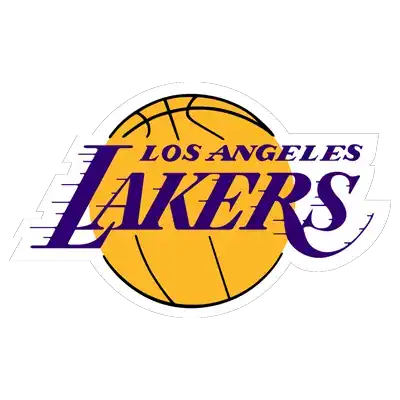
L.A. is admittedly a two-man wrecking crew, but they don’t need much more than that with this dynamic duo guiding them to the 10th-best offense in the league. The Lakers could share the ball more and play better defense, but it’s hard to knock the results to this point.
Head‑to‑Head / Historical Context
The Spurs and Lakers have a very rich history, having met 192 total times during the regular season. The series have been incredibly competitive and nearly dead even, with the Lakers presently holding a mild 98-94 advantage.
Los Angeles has been the aggressor for some time now, as they went 3-1 in the regular season series last year and have won nine of the last 11 meetings.
In the last five games played in L.A., the Lakers are 4-1.
Key Matchup Breakdown
The Spurs have largely been a two-man offense so far, with Wemby taking on the most usage and turning that into 26 points per game. He is quite effective no matter where he opts to attack defenses, but he’s only connecting on 28% of his threes, so the Lakers may hope to push him outside more than usual.
Stephon Castle is San Antonio’s second leading scorer at 20 points per game and also the team leader in assists. He’s the safest bet to set the offense up most of the time, but this team as a whole is succeeding more in isolation, as they rank 24th in assists per game.
The Spurs are great at running and attacking; however, as they rank 1st in fastbreak points per game, and also dominate (9th) inside. They do struggle at the free throw line (28th), but they have several other ancillary scorers – Keldon Johnson, Dylan Harper, etc – that aid an efficient offense that works well inside the perimeter.
Los Angeles naturally leans heavily on Luka Doncic and Austin Reaves at the moment. Reaves takes a backseat to Doncic when both are on the floor, and when Luka is sidelined, it’s The Austin Reaves Show.
We haven’t seen that much of them together, but so far, things are clicking. The Lakers are getting inside production out of those two stars, but Rui Hachimura and DeAndre Ayton (16+ points per game) have been erratic sources of offensive support.
They are both capable and on the year are chipping in, but ideally they do so with more consistency. Everything is working overall, though, as the Lake Show ranks 10th in scoring, works well inside the paint (3rd), and operates the eighth most efficient offense in The Association.
Doncic’s aggressive nature and ability to penetrate the defense spearhead L.A.’s dominance inside, while Ayton has also played a key role. Despite their elite iso ball, the Lakers share the ball pretty well (13th in assists per game) and regularly get to the line (7th in free throw makes).
The Spurs run at the 11th fastest pace in the league, while the Lakers tend to play on the slower side (22nd). L.A. has a passable defense, but it pales in comparison to San Antonio’s, which ranks first in scoring and 2nd in overall efficiency.
San Antonio has the ability to avoid losing their defensive bite despite pushing the pace and putting up points, which puts the Lakers at a disadvantage, even at home.
- Who guards Luka? Doncic is pretty unstoppable due to his outside shooting and ability to get easy buckets inside, while the Spurs are without two of their best on-ball defenders in Fox and Sochan. Do they have anyone that can slow Luka down?
- Ayton vs. Wemby: DeAndre Ayton has caught a lot of heat over the years, but he’s played pretty well for the Lakers. He will be the team’s last line of defense against Wemby when he goes inside, though. I definitely give Wemby the edge, but can Ayton make him work for his points?
- Someone other than Luka+Reaves: The Spurs play great team defense, and Wemby can swat everything away inside. If San Antonio tracks Luka well and contains Reaves, the Lakers may need a third scorer to step up in a big way. Ayton or Rui are the most logical bets, but it could take an unsung hero like Marcus Smart or Jake LaRavia for L.A. to change the tide in this matchup.
The Lakers have weirdly endured both of their losses at home this year. Both came against teams that presently rank inside the top-11 in defensive efficiency.
The sample size is small, but Luka Doncic has yet to lose to Wemby. He’s a perfect 4-0 against his fellow Western Conference superstar.
Los Angeles has been fantastic against the spread. They are 6-2 ATS overall on the year and 2-0 ATS as the favorite. They are just 2-2 against the spread at home, however.
San Antonio is just 3-1-2 against the spread as a whole and 1-0 ATS as the underdog.
Betting Odds & Market Interpretation
Check out the latest Spurs vs. Lakers betting odds (via FanDuel):
| Team | Spread | Moneyline | Total |
|---|---|---|---|
Spurs | +3 (-112) | +122 | Over 228.5 (-110) |
Lakers | -3 (-108) | -144 | Under 228.5 (-110) |
What the Market Suggests
The market indicates that there is not a huge gap between the Spurs and the Lakers right now. L.A. is getting respect due to their solid start and the fact that this game is at home, but San Antonio being just 3-point road dogs means they have a decent chance to stage the upset. Both teams put up plenty of points, with their 230.5 total suggesting this will be a bit of a shootout.
From a Bettor’s Lens
Betting against Luke Doncic never feels fun, but the Spurs do feel like the more compelling value at first glance. They are on the road, but they are much healthier than the Lakers right now, and bettors can get them at plus money.
This game’s total also stands out. San Antonio’s defense can be solid, but they don’t really have anyone that can tame Luka. Given both offenses’ potential, the Over is tough to deny.
Situational Considerations
San Antonio will be very rested for this one, as their last game was three days ago on November 2nd. L.A. played on November 3rd, but sat their top two offensive weapons.
Health-wise, the Spurs are in better shape. LeBron James remains out for the Lakers, while Los Angeles could be without up to five other rotational bodies. De’Aaron Fox and Jeremy Sochan remain sidelined for the Spurs, but they still enter this matchup with better overall depth.
Best Bets & Confidence Levels
| Bet | Recommendation | Confidence Level |
|---|---|---|
Over 228.5 (-110) | The Lakers are top 10 in scoring, and the Spurs are 11th in pace. I don’t see this being a boring, slow-paced game. I see a lot of points from both sides. Given the spread, pace, and star power involved, we should be getting a high-scoring affair. | 7/10 |
Spurs +122 | San Antonio is on the road, but they are a little more rested than the Lakers; they are healthier overall, and they have a stingier defense. The value looks good on both sides, but the Spurs feel like a smash at plus money. | 7/10 |
Prop – Luka Doncic Over 35+ Points (+114) | San Antonio’s defense is quite good, but they still give up over 108 points per game, and completely silencing Luka – who has scored 40+ in three of four games on the year – seems unlikely. | 7/10 |
San Antonio Spurs vs. Los Angeles Lakers lines can shift fast — monitor real-time odds and compare the best spreads now at our best sports betting sites before tip-off.
Final Score Prediction & Closing Thoughts
Final Score Prediction: Spurs 117, Lakers 114
The Spurs have the #1 scoring defense in all of basketball, so there’s no doubt that they have the ability to put the clamps down. There is enough wiggle room to allow for a living legend like Luka Doncic to go off, however, so I do think this game should stay close and be relatively high-scoring.
If that’s going to be true, Doncic will need to be locked in. Without LeBron James to steal usage, I see no reason to believe that won’t be the case. It will be enough to get Luka 35+ points and help the Over hit, but the more balanced Spurs should steal a big road win in the process.
